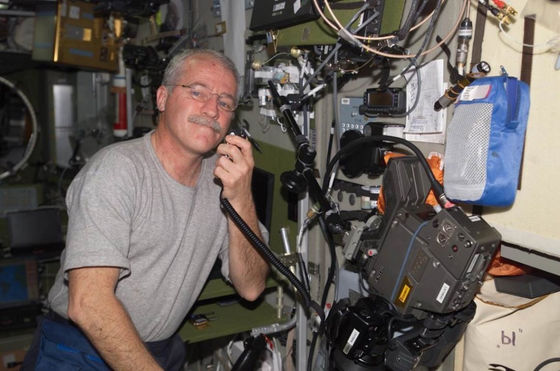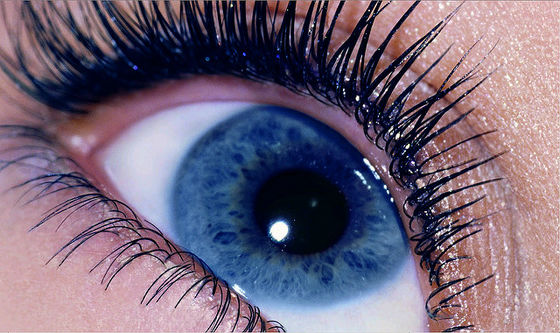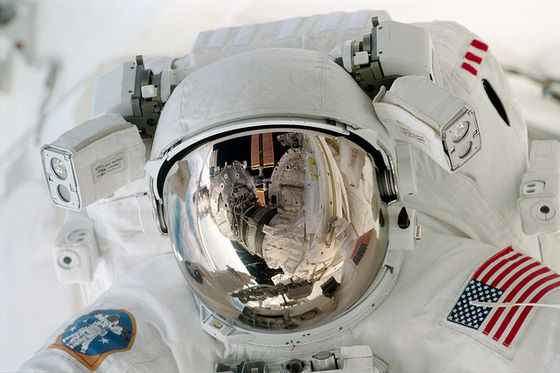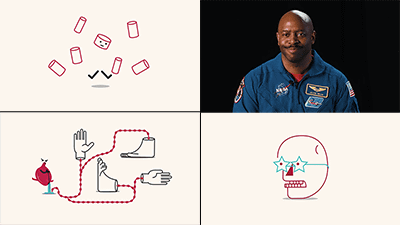Mysterious disease "VIIP" caused by a long-term space stay mission

ByNASA Goddard Space Flight Center
Long-term space mission missions are roughly divided into "influence of microgravity", "influence of radiation", "mental and psychological effects"Health riskIt is considered to exist. It is thought that various health risks are lurking from frequently heard such as "It is necessary to exercise to prevent muscle and bone loss in microgravity space" to unknown symptoms Although it is caused by long-term stay in the universe "VIIP"Attracting attention.
The mysterious syndrome impairing astronauts' sight - The Washington Post
https://www.washingtonpost.com/national/health-science/the-mysterious-syndrome-impairing-astronauts-eyesight/2016/07/09/f20fb9a6-41f1-11e6-88d0-6adee48be8bc_story.html

AstronautJohn PhillipsAfter a long vacation on Earth, Mr.International Space StationI headed for a staying mission at the International Space Station (ISS). In the mission, it was scheduled to stay at ISS for the period from April to October. But on the way, Mr. Phillips looked down at the Earth from the ISS, he seemed to be blurred in sight, he seems to be unable to see and focus. Mr. Phillips' eyesight has been20/20(1.0 in eyesight in Japan), so declining vision was caught as a very strange event.

Phillips said: "I'm not sure if I reported that the sight was down to the ground, I probably would not report it, I think that this phenomenon will soon disappear, return to Earth I thought it was going to cure soon, "he talks about the feelings of the time. However, Mr. Phillips' vision did not recover. According to the physical examination data carried out by NASA, Mr. Phillips' vision decreased from 20/20 (visual acuity 1.0) to 20/100 (visual acuity 0.2) in the space flight mission period of about 6 months.
In order to obtain more accurate data,MRIRetinal scan, neurological test, spinal puncture etc are performed. As a result of these examinations, Mr. Phillips' eyes found not only that his eyesight was decreasing, but also that the eye itself had changed. Mr. Phillips' eyeball's back is level, so that the retina is squeezedChoroidal foldHe seems to have suffered from it. Due to this symptom, Mr. Phillips' optic nerve seems to have been inflamed.
The following shows the retina (right) before onset (right) and onset (left) of the mysterious symptoms of astronauts who participated in a long-term space stay missionOptical tomographyWhat you did. Collapse collapse can be confirmed in the arrow part.

Mr. Phillips' case is now known as a bizarre symptom that may be affected by about 80% of astronauts due to long-term missions in the universe. It goes without saying that this symptom made it difficult to select participants in future missions. This symptom is named "Visual impairment intracranial pressure syndrome (VIIP)".
On the earth, body fluid flows toward the foot by gravity. However, since this phenomenon does not occur in the universe, excess liquid accumulates on the head and it is thought that it will cause VIIP by compressing the back of the brain and the eyeball. Originally, NASA thought that VIIP was a symptom unique to Mr. Phillips, but it seems that the symptoms of VIIP were found by other astronauts as a result of surveys. It is now VIIP, which became widely known as "a big problem for astronauts", but a lot of effort was paid to understand and study this symptom.
The most common symptoms on Earth and most similar to VIIP areIdiopathic intracranial hypertensionIt is (IIH). When IIH develops, the internal pressure of the head rises, and visual acuity drops like VIIP. Also, in another symptom,Stasis papillaAs with VIIP the optic nerve swells up. However, neither is completely the same symptom as VIIP. For example, in case of IIH, the cause is unknown because it is "idiopathic", and various symptoms such as nausea and dizziness not seen in VIIP are seen. Also, in case of congestive papilla, drug treatment is effective against the swelling of the optic nerve, but there is no effect in the case of VIIP.
Carina Marshall Gabel, who works at the Institute for Space Medicine in Germany, is conducting experiments to simulate the fluidity of fluid in outer space by slightly tilting the subject's head. But Gebel says, "This experiment is not ideal." This is because gravity is affecting the experiment on the ground, and it is because it is impossible to keep the subject's head inclined for as long as the astronaut. "The space environment is very special, I can not imitate that environment without going to space," Gebel said.

ByLook Into My Eyes
Some scientists try to elucidate the mechanism of VIIP by simulating the space environment on the ground like Mr. Gebel and some researchers seek out a new screening method so that the symptoms of VIIP can be inspected in space in detail . Mr. Erik Beershjadi, a neurologist at Baylor Medical College, is studying a method to measure brain pressure by using ultrasonic examination on the ocular artery. However, it is devised at presentNoninvasiveIt seems that none of the techniques are sufficiently accurate as compared to invasive measurement methods.
Mr. Ross Essier, a biomedical engineer at the Georgia Institute of Technology, conducts simulations to find out what pressure is being applied to the astronaut's brain in the universe. And Mr. Esashi intends to solve VIIP by "developing a device to flow the astronaut's body fluid in the foot direction in outer space". However, "There are millions of things that can be measured at the moment, and I have not yet considered how to start the investigation from which one," he says, which is a long way to go.
Mr. Michael Barratt of NASA and specialists of space medicine are seeking a more fundamental approach. Mr. Bharat is an active astronaut who feels a decline in sight when staying in the space station for about half a year in 2009. Mr. Bharat and his colleague Bob Sarks also seemed to suffer a sight drop, and the two find minor changes in the optic nerve with an examination with an ophthalmoscope. After returning to the ground, the two persons are inspected using the facility of NASA, and it is confirmed that they have developed VIIP. From this experience, Mr. Barat said that he was keenly aware of the necessity of intracranial pressure measurement in outer space, even though invasive procedures would be necessary to deal with VIIP. As a solution to that, Mr. Barat proposes a method of implanting a probe in the skull a few months before he leaves space.

ByNASA Goddard Space Flight Center
Furthermore, it was announced in April 2015the study, We measure the intracranial pressure at zero gravity by causing subjects who implanted on the head to measure the intracranial pressure to experience a zero gravity state for 25 seconds by zero gravity flight. As a result of this experiment, it became clear that the intracranial pressure decreases at zero gravity. This is the opposite of what was supposed to be the opposite, which was an experimental result that confuses research on VIIP.
About this experiment, Mr. Barat said, "This is not a science project but a medical problem, perhaps VIIP is the second most dangerous astronaut to risk," said Mr. Bharat on the importance of VIIP related research I am talking. The most dangerous thing for astronauts is "radiation exposure".
Related Posts:
in Science, Posted by logu_ii







